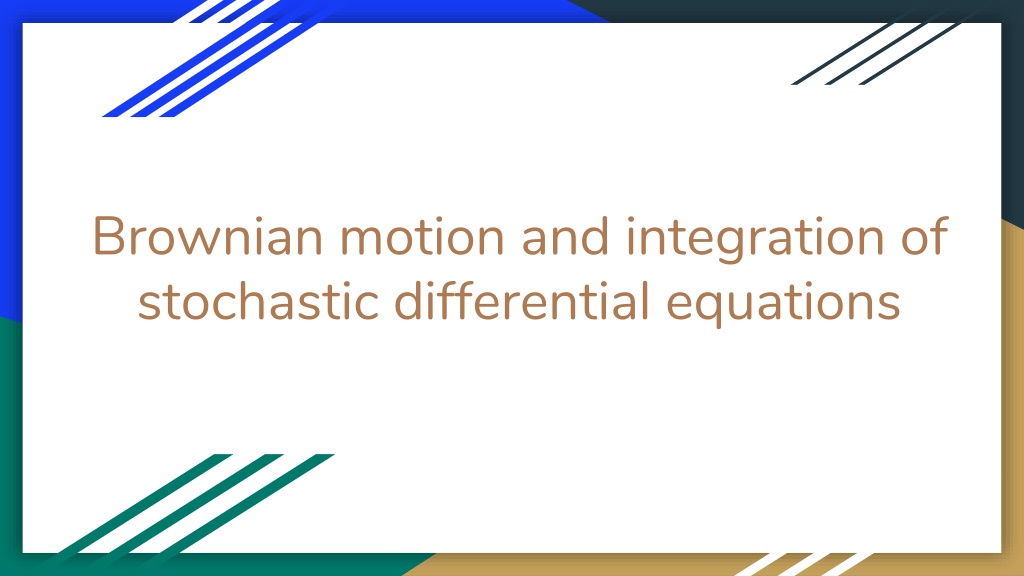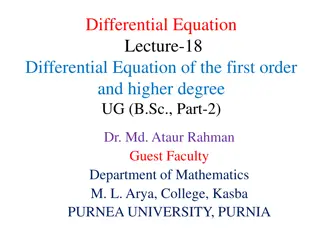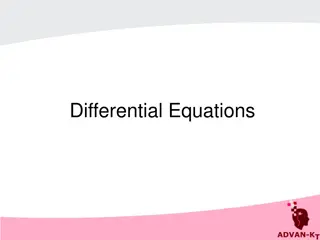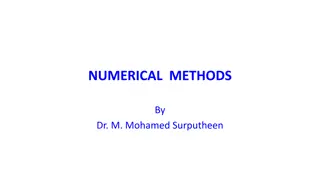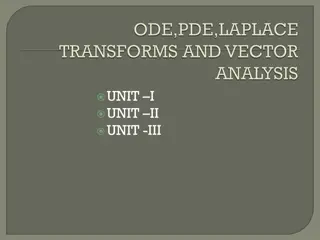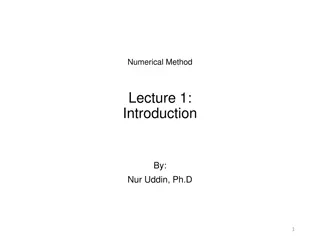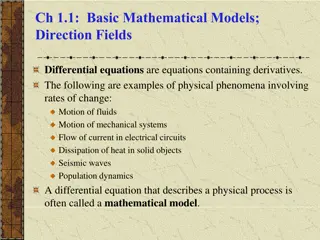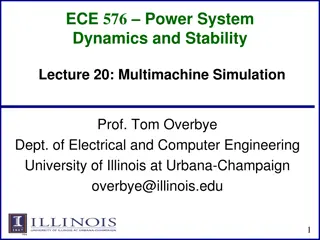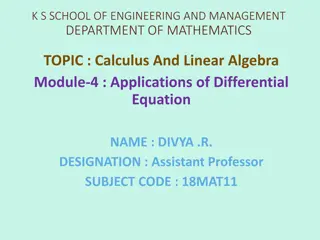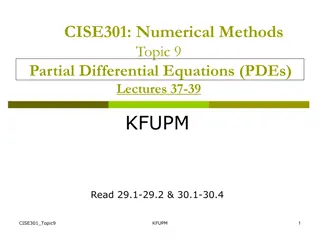Understanding Stochastic Differential Equations and Numerical Integration
Explore the concepts of Brownian motion, integration of stochastic differential equations, and derivations by Einstein and Langevin. Learn about the assumptions, forces, and numerical integration methods in the context of stochastic processes. Discover the key results and equations that characterize these dynamic systems.
Download Presentation

Please find below an Image/Link to download the presentation.
The content on the website is provided AS IS for your information and personal use only. It may not be sold, licensed, or shared on other websites without obtaining consent from the author. Download presentation by click this link. If you encounter any issues during the download, it is possible that the publisher has removed the file from their server.
E N D
Presentation Transcript
Brownian motion and integration of stochastic differential equations
Einstein derivation of diffusion equation two hypothesis: The motion of the suspended pollen particles is caused by the frequent impact with water molecules This motion can be described in terms of probabilities of imbalances of statistically independent impacts Two important results derived:
Langevin derivation Langevin assumes that the particle only acts two forces: viscous drag: assuming the particle is a sphere of radius a immersed in a liquid with viscosity, and assuming the formula for the drag is the same as for a macroscopic object fluctuating force X: it represents the impact of molecules of the liquid on the particle; it must therefore be negative or positive with equal probability. We say that X is a Gaussian white noise with null average (this translates the affirmation that it can be, with equal probability, negative or positive), and delta correlated in time: We get: which can be solved to:
Numerical integration of stochastic differential equations It can be shown that, given a generic stochastic differential equation of the form: where is a Gaussian white noise of mean zero and delta correlated in time as before, once we discretize time, can be given by: For the specific case of a free Brownian particle, q(x)=0 and Using the general formula above, we get:
